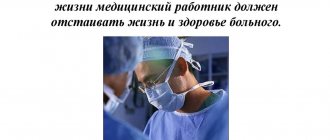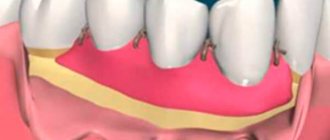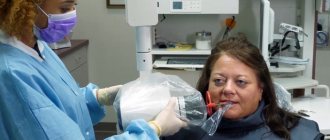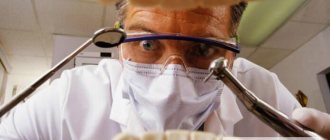| [organizational and legal form, name of organization, enterprise] | I approve [position, signature, full name of the manager or other official authorized to approve the job description] [day month Year] M.P. |
Job description of a dental hygienist [name of organization, enterprise, etc.]
This job description has been developed and approved in accordance with the provisions of the Labor Code of the Russian Federation and other regulations governing labor relations in the Russian Federation.
General provisions
1.1. A dental hygienist is a specialist.
1.2. A person with a secondary medical education in the specialty “Preventive Dentistry” is appointed to the position of dental hygienist.
1.3. A dental hygienist is appointed and dismissed by the chief physician (director) of the institution.
1.4. The dental hygienist must know:
— laws, government regulations and other regulatory legal acts that determine the development of healthcare and relate to the provision of dental care to the population;
— principles of medical examination of the population;
— principles of medical ethics and deontology;
— principles of organizing preventive dental care for children and adults;
— methods and means of preventing dental diseases;
— basics of epidemiology, etiology and pathogenesis, diagnosis and general principles of treatment of major dental diseases;
— indices for recording the intensity of caries and periodontal diseases, the hygienic state of the oral cavity;
— methods and means of individual and professional oral hygiene, features and organization of teaching oral hygiene to children in organized children's groups;
— methods of dental education of the population;
— safety regulations, industrial sanitation and fire protection;
- [fill in what you need].
1.5. During the absence of a dental hygienist (vacation, illness, etc.), his duties are performed by a person appointed in the prescribed manner.
1.6. [Enter as appropriate].
Obstetrician-gynecologist Obstetrician-gynecologist. Job description.
1. General provisions 1.1. An obstetrician-gynecologist belongs to the category of medical specialists and is directly subordinate to _________________________________. (position of immediate supervisor) 1.2. A doctor who has completed specialization in obstetrics and gynecology or has experience in this specialty is accepted for the position of obstetrician-gynecologist. 1.3. An obstetrician-gynecologist is hired and quits ____ __________________. (position) 1.4. An obstetrician-gynecologist is obliged to apply in practice the principles of scientific organization of work, actively use electronic computing and medical-diagnostic equipment in relation to the profile of his activity, be able to navigate modern scientific and technical information, effectively use it to solve practical problems, and show initiative. - initiative, integrity and conscientiousness in work, promote a healthy lifestyle and follow its principles. 1.5. An obstetrician-gynecologist must know: - the basics of healthcare legislation and directive documents defining the activities of healthcare authorities and institutions; — organization of obstetric and gynecological care in the country, organization of ambulance and emergency care; — maternal and perinatal mortality rates and measures to reduce them; — basics of topographic anatomy of body regions and, first of all, the anterior abdominal wall and abdominal cavity, retroperitoneal space, pelvis and urogenital region in normal and pathological conditions; — the main issues of normal and pathological physiology, respectively, in healthy women and in obstetric and gynecological pathology; — the relationship between the functional systems of the body and the levels of their regulation; — physiology and pathology of a woman’s menstrual function; — physiology and pathology of pregnancy, childbirth and the postpartum period, risk groups; — causes of pathological processes in a woman’s body, mechanisms of their development and clinical manifestations; — the influence of production factors on the specific functions of the female body; — physiology and pathology of the hemostatic system, indications and contraindications for transfusion of blood and its components; — the basics of water-electrolyte metabolism and the acid-base state of the blood, possible types of their disorders and principles of treatment; — general and special research methods in obstetrics and gynecology, including the functional state of the ovaries; — basics of the use of endoscopy and x-ray radiology for the examination and treatment of gynecological patients; — issues of asepsis and antiseptics in obstetrics and gynecology; — basics of immunology and genetics in obstetrics and gynecology; — principles, techniques and methods of pain relief in obstetrics and gynecology, the basics of intensive care and resuscitation in women and newborns; — basics of infusion therapy in obstetrics and gynecology, characteristics of blood products and blood substitutes; — basics of pharmacotherapy in obstetrics and gynecology; — principles of preoperative preparation and postoperative management of patients, rehabilitation methods; — basics of the pathogenetic approach when conducting therapy in obstetrics and gynecology; — basics of physiotherapy and physical therapy in obstetrics and gynecology, indications and contraindications for sanatorium treatment; — basics of rational nutrition and principles of diet therapy in obstetric and gynecological practice; — new modern methods of prevention and treatment of obstetric and gynecological pathology, as well as unplanned pregnancy; — basics of oncological vigilance for the purpose of prevention and early diagnosis of malignant neoplasms in women; — issues of temporary and permanent disability, medical labor examination in obstetrics and gynecology; — organizing and conducting clinical examinations of women, analyzing its effectiveness; — features of the sanitary and epidemiological regime in the departments of the obstetric and gynecological hospital, in the antenatal clinic; — indications for hospitalization of pregnant women and gynecological patients; — equipment and facilities for operating rooms and intensive care wards, safety precautions when working with equipment, surgical instruments used in various obstetric and gynecological operations; — principles of working with monitors; — fundamentals of legal law in obstetrics and gynecology; — issues of organizing the civil defense medical service; — prevention, diagnosis, clinic and treatment, be able to diagnose and provide the necessary assistance in the following emergency conditions: traumatic shock, acute blood loss (including premature placental abruption), eclampsia, acute cardiovascular and respiratory failure. 1.6. An obstetrician-gynecologist must be able to: - obtain information about the course of pregnancy and the disease; — identify risk factors for the development of one or another obstetric and gynecological pathology and organize preventive measures; - apply objective methods of examining a pregnant woman, a patient, to identify general and specific signs of a gynecological disease or pregnancy complication; — assess the severity of the patient’s condition, determine the volume and sequence of resuscitation measures; — provide the necessary urgent assistance in case of emergency conditions; — determine the need to use special research methods (laboratory, radiological, endoscopic, functional), interpret the data obtained; — identify early signs of pregnancy, determine its timing, fetal position, pelvic size; — determine the indications for hospitalization of a pregnant or gynecological patient, organize hospitalization in accordance with the woman’s condition; — draw up a differentiated management plan for a pregnant woman and carry out its correction over time; — develop a plan for preparing the patient for emergency or planned surgery, determine the degree of disruption of homeostasis, and prepare all functional systems of the body for surgery; — determine the blood type and perform intravenous or intra-arterial blood transfusion, reinfusion; identify possible transfusion complications and carry out the necessary treatment and preventive measures; — apply, according to indications, an adequate method of pain relief in obstetric and gynecological practice; - resolve the issue of the patient’s ability to work; — maintain medical documentation, ensure continuity between treatment and preventive institutions; - prevent unplanned pregnancy; — carry out clinical examination and evaluate its effectiveness; — analyze the main performance indicators of a medical institution; — carry out sanitary educational work; — establish the duration of pregnancy, assess the health status of the pregnant woman, identify possible disorders and carry out a set of dispensary measures; — identify signs of early or late pregnancy pathology (early and late toxicosis, dropsy, nephropathy, eclampsia) and take all necessary measures to eliminate it; — perform external and internal obstetric examination, determine the phase of labor and the position of the fetus, the degree of maturity of the cervix; — carry out physiological childbirth, childbirth with an occipital or cephalic presentation of the fetus; — promptly recognize and carry out childbirth in cases of extensor presentation of the fetus, breech presentation, large fetus and multiple pregnancies; - assess the degree of narrowing of the pelvis, justify the most rational tactics and implement it; — timely determine the indications for cesarean section; — justify the tactics for the transverse position of the fetus and implement it; — justify the tactics of labor management for extragenital diseases; - determine labor anomalies (primary weakness, secondary weakness, rapid and rapid labor) and regulate labor; — establish the cause of obstetric hemorrhage (placenta previa, premature abruption, atonic bleeding) and provide the necessary assistance for this condition; — establish signs of intrauterine fetal hypoxia and provide the necessary assistance; — perform resuscitation measures for asphyxia and birth trauma of a newborn; — assess the course of the postpartum period, identify postpartum complications and combat them; — identify complications of the newborn period, develop therapeutic measures and carry them out; — establish a diagnosis and carry out the necessary treatment for the following diseases: ectopic pregnancy, out-of-hospital abortion, genital tuberculosis, inflammatory diseases of the female genital organs of septic etiology, abnormalities in the position of the genital organs, gonorrhea in women, trichomoniasis of the genitourinary organs, dishormonal diseases, benign venous tumors of the uterus and appendages, malignant tumors of the uterus and appendages. 2. Operations and manipulations 2.1. An obstetrician-gynecologist performs the following operations and manipulations: — colposcopy; — diagnostic curettage of the uterine cavity; — curettage of the uterine cavity during termination of pregnancy; - classic manual; — fetal extraction; - obstetric forceps; - massage of the uterus with its atony; - C-section; - suturing rupture of the cervix, vagina, perineum; — manual separation and release of placenta, manual control of the uterine cavity; — laparotomy for ectopic pregnancy and torsion of ovarian cyst; — puncture of the posterior fornix; — hydrotubation; - amniotomy; - hysterosalpingography; - amputation of the uterus; - targeted biopsy; — removal of a polyp of the cervical mucosa; — catheterization of the bladder; - gastric probing; - siphon enema; - venesection, intravenous infusions, blood transfusion. 3. Job responsibilities 3.1. The main task of an obstetrician-gynecologist is to provide qualified obstetric and gynecological care. 3.2. In accordance with the main task, the obstetrician-gynecologist ensures: 3.2.1 an appropriate level of observation, examination and treatment of women in accordance with the principles of the medical and protective regime and compliance with the rules of medical deontology; 3.2.2 timely provision of maternity leave in accordance with current legislation, sick leave in cases of temporary disability, referral to a medical advisory commission and VTEK; 3.2.3 carrying out sanitary education work among women; 3.2.4 systematically carrying out activities to improve the qualifications of middle and junior medical personnel. 4. Rights and obligations 4.1. An obstetrician-gynecologist is obliged to: 4.1.1 know and be able to apply in practice modern (tested) methods and means of examination, diagnosis and treatment; 4.1.2 conduct daily rounds in the wards together with the midwife (nurse); 4.1.3 participate in rounds of the head of the department and report to him about hospitalized women, and, if necessary, take part in consultations with patients; 4.1.4 participate in the reception of pregnant women, women in labor, postpartum women and patients entering the department during its opening hours; carry out their examination, prescribe the necessary therapeutic and diagnostic measures and fill out medical records in the prescribed manner; 4.1.5 be on duty in accordance with the approved schedule; 4.1.6 transmit to the hospital doctor on duty a list with the names of patients requiring special monitoring; 4.1.7 when contacting relatives in person, provide information about the health status of women in labor, postpartum women and patients, taking into account the principles of maintaining medical confidentiality; explain to relatives and the woman herself the inappropriateness and harm of premature discharge or further hospital stay; 4.1.8 report to the head of the department, and in his absence, directly to the deputy chief physician for the medical unit (or chief physician): - about life-threatening changes in the health status of patients and about all cases of death; — about gross violations of internal regulations by medical personnel and patients; 4.1.9 systematically improve your qualifications. 4.2. An obstetrician-gynecologist has the right to: 4.2.1 prescribe and cancel (previously prescribed by the doctor himself) any therapeutic and diagnostic measures arising from the changing condition of the patient and the availability of diagnostic and treatment capabilities; 4.2.2 check the correctness and timeliness of implementation by nursing and junior medical personnel of appointments and instructions for the treatment and care of women, keeping them in proper cleanliness and tidiness; 4.2.3 discharge and transfer the woman to another department of the maternity hospital or another medical and preventive institution in agreement with the head of the department; 4.2.4 instruct subordinate employees of the department to make proposals to reward these employees or impose disciplinary sanctions on them for individual omissions in work or violation of internal labor regulations; 4.2.5 issue sick leave certificates in accordance with current instructions. 5. Responsibility 5.1. An obstetrician-gynecologist is responsible for violations of the rights of citizens in the field of health care resulting from failure to fulfill or improper performance of his professional duties, in accordance with the legislation of the Russian Federation. 5.2. In the event of a violation of the rights of citizens in the field of health protection due to the dishonest performance by an obstetrician-gynecologist of his professional duties, resulting in harm to the health of citizens or their death, he is obliged to compensate for damage in the amount and manner established by the legislation of the Russian Federation. 5.3. For violation of labor discipline, legislative and regulatory acts, an obstetrician-gynecologist bears disciplinary, material, administrative and criminal liability in accordance with the current legislation of the Russian Federation. Software package “Human Resources Department. Staffing", "Tarification" (tariff lists) from MedSoft Kurchatov for medical institutions will effectively perform the tasks of personnel records, formation of staffing, tariff lists, all document flow, detailed data analysis. This is your personal assistant. More information about the program 'Human Resources Department. Staffing'
Job responsibilities
Dental hygienist:
2.1. Diagnoses dental caries, periodontal diseases, non-carious lesions, diseases of the mucous membrane and registers the patient’s dental status.
2.2. Determines the hygienic condition of the oral cavity and teaches the patient how to brush teeth, conducts control brushing of teeth, and gives individual recommendations on the choice of hygiene products for children and adults.
2.3. Provides recommendations to patients on the care of orthodontic and orthopedic structures.
2.4. Carries out preventive and hygienic measures aimed at preserving the dental health of the population and developing skills in rational oral care.
2.5. Draws up and implements a program for individual prevention of dental diseases.
2.6. Performs preventive procedures: coating of teeth with fluoride varnish and fluorine gel, rinsing and application with remineralizing solutions, sealing of dental fissures, removal of supra- and subgingival dental plaque, periodontal applications.
2.7. Conducts prevention of major dental diseases in children of organized children's groups.
2.8. Provides dental education to the population of different age groups, medical personnel, preschool teachers, teachers, and parents.
2.9. Conducts surveys of the population on the prevention of dental diseases.
2.10. Designs oral hygiene corners in organized children's groups, prepares reminders and health bulletins.
2.11. Maintains accounting and reporting documentation.
2.12. [Enter as appropriate].
History of the profession
Traces of dental care are recorded by archaeologists during excavations with remains over 1.8 million years old. The first predecessors of toothbrushes appeared in India, and the first toothpaste recipes appeared in Greece around 1500 BC. A real toothbrush made from pig bristles was invented by the Chinese in the 15th century, and already in the 18th century the English company Addis began producing brushes. But until the beginning of the 19th century, oral hygiene was limited to removing tartar and was the prerogative of barbers, not doctors.
America can rightfully be considered the birthplace of oral hygiene. There, at the beginning of the 19th century, dentists formed the habit of entrusting preventive oral care activities to their assistants. In 1844, this was the reason for the birth of a “new” medical specialty: dental hygienist. The results of the work of hygienists made it possible to reduce caries among American residents by 65%. And in the future, Americans never relinquished the palm in matters of oral hygiene.
The modern toothpaste tube was invented by the American Colgate; 1937 is the date of the creation of nylon, which opened a new page in the development of toothbrushes: durable, elastic, moisture-resistant and antibacterial. At the end of the 30s of the last century, the first electric toothbrush was born in the USA, and in 1967, oral irrigators were invented there. All this forms the basis of periodontal care today.
In Russia, dental hygienists have been practicing since the beginning of the twentieth century, but then the profession was forgotten due to objective circumstances: a series of revolutions and wars. The first Soviet toothpaste dates back to 1950! And only since 2001, dental hygiene offices began to open in the country.
One of the first advertising posters for toothpaste invented in the USA.
What does a dental hygienist do?
- carries out professional removal of dental plaque;
- selects products for individual home care;
- tells and shows how to properly perform hygiene at home;
- deals with teeth whitening;
- treats gums with the Vector device;
- is engaged in the prevention of caries development in children.
It is best to visit a hygienist once every six months - this allows patients to eliminate diseases of the teeth and gums and forget what a drill is. Also, during the examination, the hygienist sees diseases that require treatment from related specialists. Timely referral for treatment will help avoid complications.
How will the reception take place?
You won't see a drill in a hygienist's office. However, in his work he uses quite a variety of equipment. In addition, the hygienist is aware of the latest innovations in the field of hygiene. Standard procedures will take place in several stages:
- At the first stage, the hygienist examines the oral cavity and uses a dye to identify problem areas.
- On the second stage, the teeth are cleaned of plaque, most often using a powder jet device (Air flow system).
- The third stage involves removing mineral deposits. Most often, an ultrasonic device with a special attachment is used for this.
- At the last stage, all surfaces are polished with special pastes and the enamel is strengthened with fluoride varnish.
The procedure for determining the teeth cleanliness index deserves special attention. The specialist stains your teeth with a special dye and offers you a routine teeth cleaning. After this, the result is recorded. This way, shortcomings in daily hygiene are identified and the mechanisms for improving hygiene are examined in detail. The hygienist cleans off any remaining dye using an electric brush with a rubber attachment. This procedure is especially effective for young patients.
How to become a hygienist
To become a hygienist, you need:
- Graduate from a university with a degree in Preventive Dentistry or Dentistry.
- Receive an accreditation sheet along with your diploma by passing tests, an exam and an interview with a special commission consisting of doctors of science and professors. This will give the right to work independently on an outpatient or outpatient basis.
- It is mandatory to work for a year in a clinic or outpatient clinic, and then enter residency (2 years) in the specialty “Preventive Dentistry”.
In the process of work, doctors are awarded qualification points confirming accreditation: for performing complex manipulations, participating in scientific and practical conferences and seminars, for publishing scientific articles, books, and defending a dissertation. Every 5 years these points are summed up and assessed by the accreditation commission. If you score a sufficient number of points, you can continue working in your specialty for the next five years. If there are not enough points, the doctor is deprived of the right to treat. Learn more about accreditation and internship cancellation.
The growth of professionalism, level of knowledge and experience of a doctor is usually reflected by the qualification category. All categories are assigned by a qualification commission in the presence of the doctor himself, based on his written research work containing a description of skills and knowledge.
Assignment deadlines:
- more than 3 years of experience – second category;
- more than 7 years – first;
- more than 10 years - highest.
A doctor has the right not to qualify, but this will be a disadvantage for career growth.
Career and professional growth is also facilitated by scientific activity - writing candidate and doctoral dissertations, publications in medical journals, speaking at conferences and congresses.
You can become a hygienist after receiving specialized secondary education, but in this case, the doctor’s activities are limited to the framework of a first-aid post or a school (preschool) hygiene room.
Where to get training
In addition to higher education, there are a number of short-term training on the market, usually lasting from a week to a year.
The Interregional Academy of Additional Professional Education (MADPO) provides training in the specialization “Hygiene and Sanitation” and issues diplomas and certificates.
The Medical University of Innovation and Development invites you to take distance courses for retraining or advanced training in the field of “Hygienist” to receive a diploma or state certificate. Training lasts from 16 to 2700 hours, depending on the program and your level of training.
The Institute of Professional Education "IPO" invites you to take distance courses in the direction of "Food Hygiene" (there are options 256, 512 and 1024 academic hours) to receive a diploma or state-issued certificate. We have trained more than 8,000 graduates from almost 200 cities. You can undergo external training and receive interest-free installments.
Why is it important to see a hygienist regularly?
An ordinary brush is not able to completely clean teeth from food debris and plaque. As a result, soft plaque turns into hard deposits: supragingival and subgingival calculus. They disrupt the normal attachment of the gums and destroy the ligaments of the tooth. A dangerous disease occurs - periodontitis. If you do not contact a hygienist in time for professional hygiene, your teeth will become loose and will soon fall out. Dental services include timely diagnosis and treatment of periodontitis, which helps avoid complications.
In addition, bacteria found in dental plaque destroy enamel and lead to tooth decay. Therefore, regular professional cleaning is the prevention of caries development.








